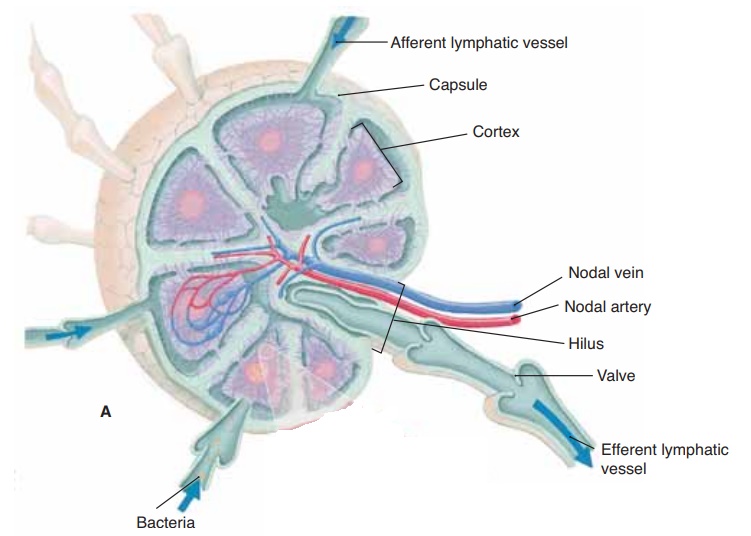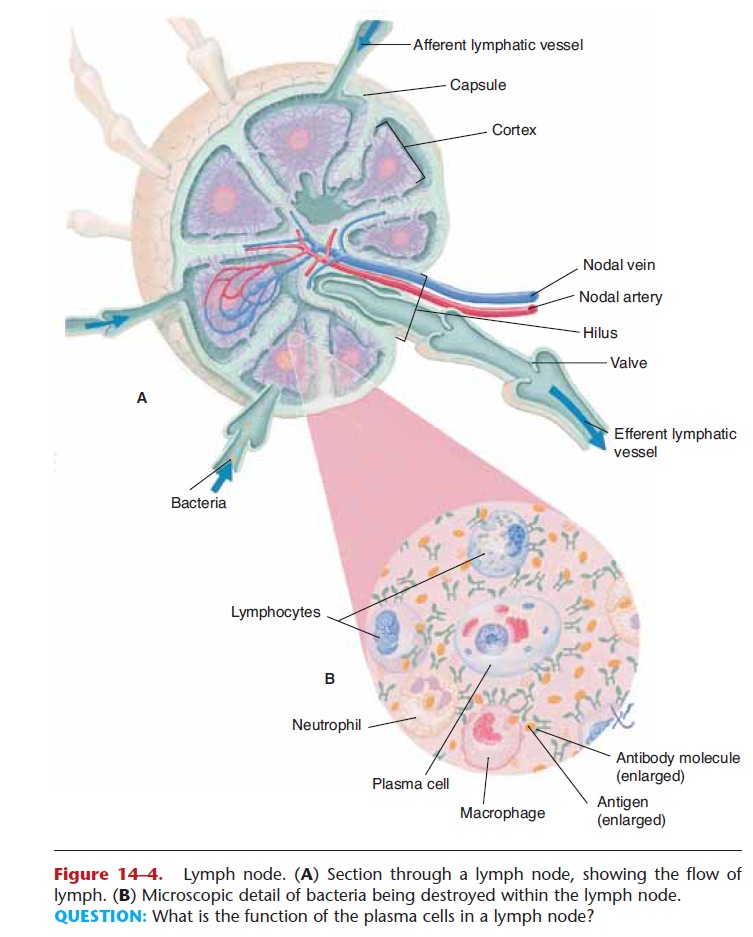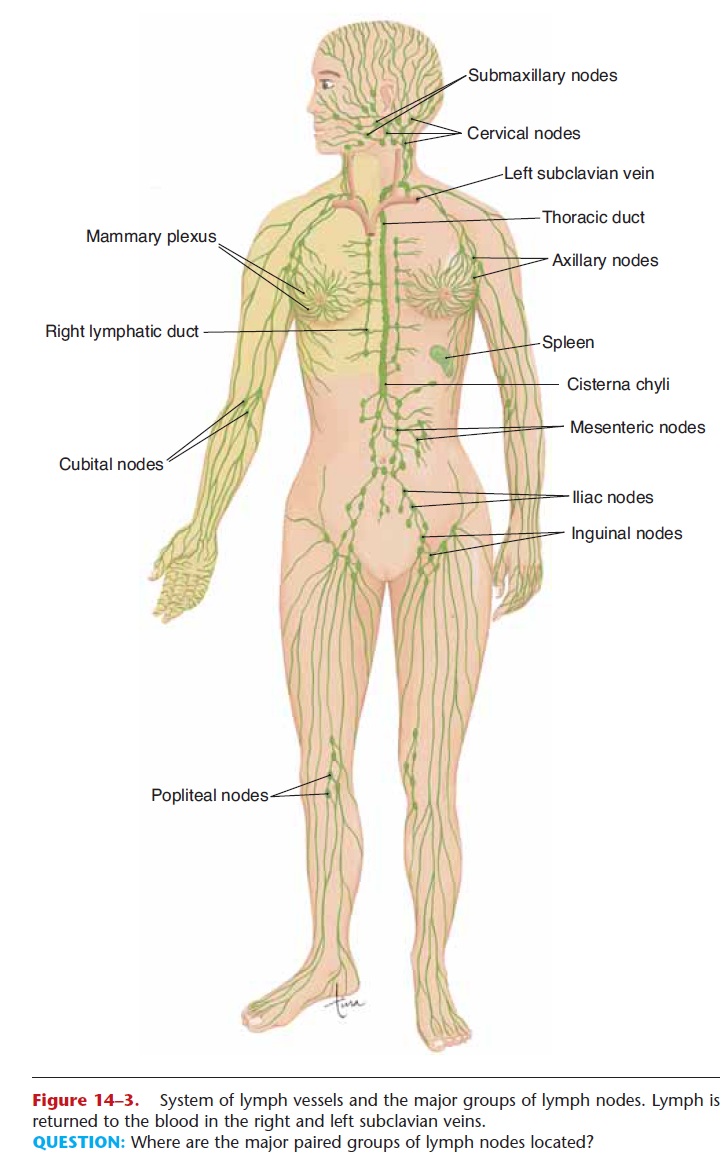Chapter: Essentials of Anatomy and Physiology: The Lymphatic System and Immunity
Lymph Nodes and Nodules

LYMPH NODES AND NODULES
Lymph nodes and nodules are masses of lymphatic tissue. Nodes and nodules differ with respect to size and location. Nodes are usually larger, 10 to 20 mm in length, and are encapsulated; nodules range from a fraction of a millimeter to several millimeters in length and do not have capsules.
Lymph nodes are found in groups along the path-ways of lymph vessels, and lymph flows through these nodes on its way to the subclavian veins. Lymph enters a node through several afferent lymph vessels and

As lymph passes through a lymph node, bacteria and other foreign materials are phagocytized by fixed (sta-tionary) macrophages. Plasma cells develop from lymphocytes exposed to pathogens in the lymph and produce antibodies. These antibodies will eventually reach the blood and circulate throughout the body.
There are many groups of lymph nodes along all the lymph vessels throughout the body, but three paired groups deserve mention because of their strate- gic locations. These are the cervical, axillary, and inguinal lymph nodes (see Fig. 14–3). Notice that these are at the junctions of the head and extremities with the trunk of the body. Breaks in the skin, with entry of pathogens, are much more likely to occur in the arms or legs or head rather than in the trunk. If these pathogens get to the lymph, they will be destroyed by the lymph nodes before they get to the trunk, before the lymph is returned to the blood in the subclavian veins.

Figure 14–3. System of lymph vessels and the major groups of lymph nodes. Lymph is returned to the blood in the right and left subclavian veins.
QUESTION: Where are the major paired groups of lymph nodes located?
You may be familiar with the expression “swollen glands,” as when a child has a strep throat (an inflam-mation of the pharynx caused by Streptococcus bacteria). These “glands” are the cervical lymph nodes that have enlarged as their macrophages attempt to destroy the bacteria in the lymph from the pharynx.
Lymph nodules are small masses of lymphatic tis-sue found just beneath the epithelium of all mucous membranes. The body systems lined with mucous membranes are those that have openings to the envi-ronment: the respiratory, digestive, urinary, and repro-ductive tracts. You can probably see that these are also strategic locations for lymph nodules, because any nat-ural body opening is a possible portal of entry for pathogens. For example, if bacteria in inhaled air get through the epithelium of the trachea, lymph nodules with their macrophages are in position to destroy these bacteria before they get to the blood.
Some of the lymph nodules have specific names. Those of the small intestine are called Peyer’s patches, and those of the pharynx are called tonsils. The palatine tonsils are on the lateral walls of the pharynx, the adenoid (pharyngeal tonsil) is on the pos-terior wall, and the lingual tonsils are on the base of the tongue. The tonsils, therefore, form a ring of lym-phatic tissue around the pharynx, which is a common pathway for food and air and for the pathogens they contain. A tonsillectomy is the surgical removal of the palatine tonsils and the adenoid and may be per-formed if the tonsils are chronically inflamed and swollen, as may happen in children. As mentioned ear-lier, the body has redundant structures to help ensure survival if one structure is lost or seriously impaired. Thus, there are many other lymph nodules in the pharynx to take over the function of the surgically removed tonsils.
Related Topics